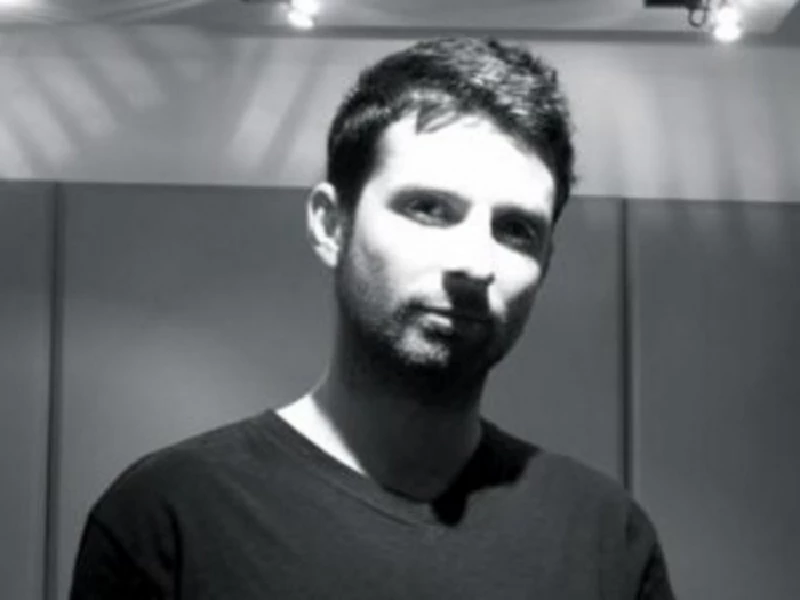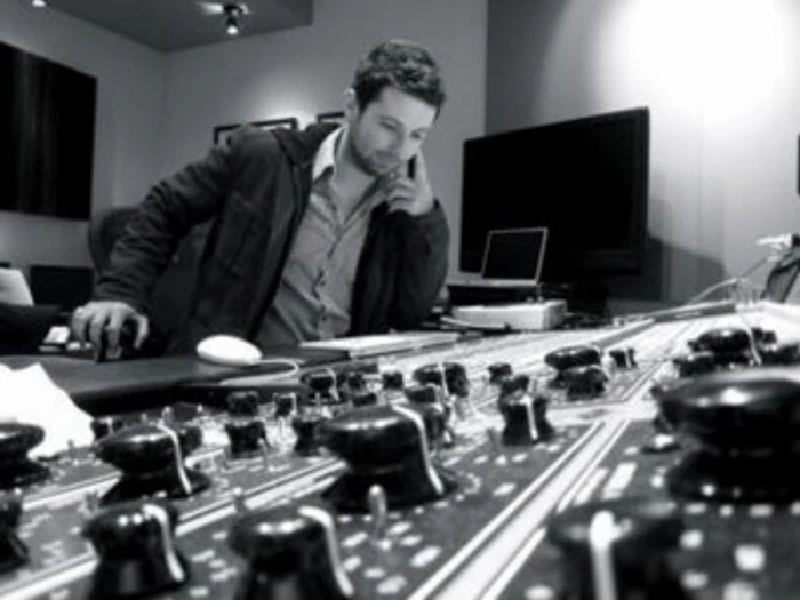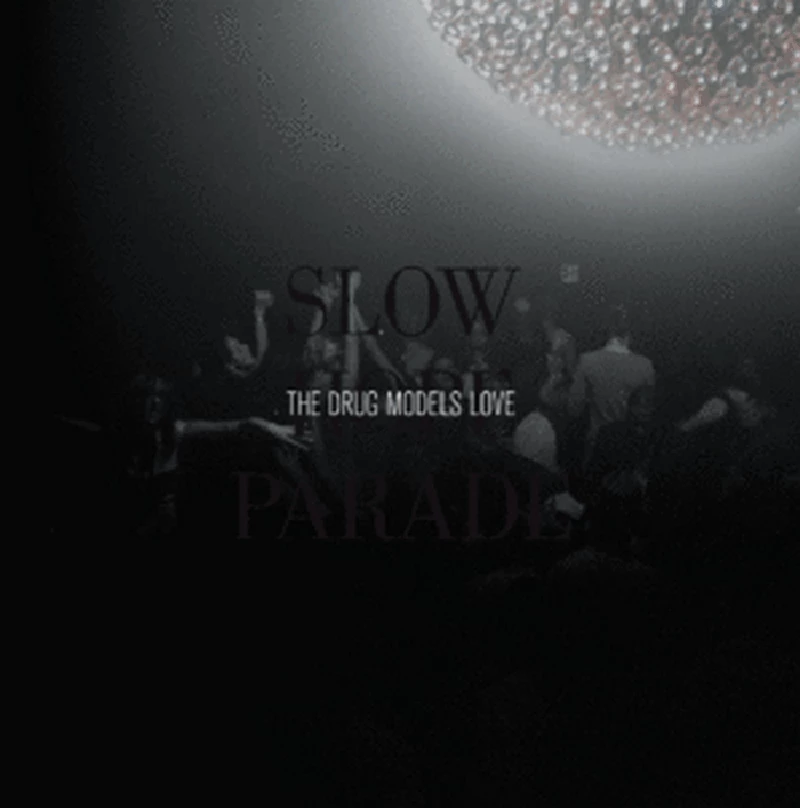Drug Models Love - Interview
by John Clarkson
published: 28 / 7 / 2009

intro
The Drug Models Love is the lo-fi project of New York-based musician, Kevin McGinnis. John Clarkson speaks to him about the confessional nature and influence of his home city on the project's debut album,'Slow Hope Parade'
The Drug Models Love is the project of Kevin McGinnis, a New York-based musician and singer-songwriter who has played in various other of that city's bands including Ursula Points and Dopo Yume. Essentially a solo act, but also occasionally a band, the Drug Models Love is about to release its debut album, 'Slow Hope Parade'. Confessional and lo-fi in tone, with a scuzzy and ragged but also euphonic sound, 'Slow Hope Parade' captures the sudden mood swings of large city and especially Big Apple living and a range of emotions from the ecstasy of being in love to alcohol-induced despair and the numbness of feeling isolated from everyone else. McGinnis played the majority of the equipment on the album, which amounted to an acoustic guitar,a Kurzweil keyboard, a drum machine, m-box and laptop PC. The only other musician who appears on 'Slow Hope Parade' is cellist Karen Satterthwaite. In an interview with Pennyblackmusic, Kevin McGinnis spoke about 'Slow Hope Parade', which is being released on Trap Recordings, a Brighton-based label. PB:‘Slow Hope Parade’ was written and recorded in New York over a nine month period between and during what you describe as “blackouts, benders, moments of bliss, philosophical isolation and spiritual derailment”. All your songs seem highly personal. Do you see it as essentially a diary of that period? KM: All of my songs are definitely highly personal and can certainly be considered a journal of a time period in my life. I’m the type of artist that only writes from his own perspective of the world around him. I’m not interested in writing more of a story narrative with a character other than myself or those involved in the scenarios being described. If the listener can relate that’s great, if not, there are plenty of other people out there who work in that style of songwriting. PB: Despite having a track on the album called ‘Sara Los Angeles’, it was written and recorded in New York. You’re a native of that city and have lived in all its boroughs at one point or another. It seems to capture all the chaos and drama of your constantly evolving city. Is it a New York album, or could it have been written somewhere else? Do you see the second main character after yourself on the album? KM: I’m glad you feel the chaos and drama was present in the recording, I certainly was living it. This album only could have been written in New York. I wouldn’t and couldn’t go through these emotions in the same way anywhere else simply because of the lifelong connection that I have to the place. Wherever I go, depending on the day and my mood, I am overly aware of my successes and failures here. I used to love this city. Now I have almost come to despise it, yet I am perpetually drawn to it like an orbiting satellite or an insecure lover. PB: It seems to tread a fine line between moments of intense joy and those which are more melancholic. Do you see it ultimately as an album of hope or despair? KM: I guess without getting to deep into my philosophies I can say I see both hope and despair as almost the same thing. Ultimately I think the things that lead you to these feelings are similar. It’s about desires and needs and the seeming impossibility of fulfilling them as life gets more complicated and lonely. For me the only true things I understand are contradictions. I don’t think life is anything but that really. PB: ‘Slow Hope Parade’ was 95% recorded in one take. Why did you decide to that? It has a lo-fi sound, but at the same time comes across as very authentic and from the gut. Given the personal nature of that album, was it because of that? While on the surface because of its raw sound, it comes across as quite simple, as you listen to it more, you realise that there are in fact quite a lot of complex ideas going on. How much preparation did you do beforehand before you sat down to record it? KM: I generally like to use either the first or second take I do and always attempt to do it straight through regardless of the recording (those who have worked with me can attest to that) but the main difference with this record was the first take was many times the first time I was performing the idea. The album was unfolding as it was being played. If it worked I wasn’t about to get rid of the immediate feeling for something more contrived. So there wasn’t a ton of preparation per say of the exact way the songs should be laid down. The preparation has really come from the years of writing songs and just knowing where they should go and giving myself and others the freedom needed to pull it off. The raw element, therefore, stays present and the listener can hopefully feel the vulnerability that comes with this type of performance. I’ve learned that the hardest thing to pull off is tricking the listener into thinking there’s no deeper composition at work. With that in mind though, I’m happy to hear you see the complexities in the writing. As for the lo-fi feeling this simply is because of budget. I don’t necessarily have any desire to specifically make lo-fi records. I have to work around the finances I have at the time. If it has to be lo-fi and it’s the only way I can express myself then lo-fi it will be. It can be a disaster to try to make a record outside of the means and limitations one has. So I use everything at my disposal to make it the best it can be without trying to be something it isn’t. Currently I’m in the studio with Carl Glanville making a full on full band record with what amounts to a proper budget. People will be able to see what I’m capable of given a better set of circumstances. PB: The cover work on the album is fantastic. Who designed that? KM: Thanks for that. It is really great and I think it fits the album vibe perfectly as well. The album artwork I found in a friend's portfolio. Her name is Danielle Lobosco. The second I saw the photos I wanted to use them and we put together a rough template, sent them to the label, and in turn a designer got in there and did the final layout. PB: You’re going to be playing some live shows shortly in Britain. There were not a lot of instruments used on the album, but you play both the keyboards and guitar, as well as use various pieces of electronic equipment. How do you intend to transfer ‘Slow Hope Parade’ to a live setting. Will you be bringing a band or other musicians with you? KM: We’ve already done a few shows over here in the States and it’s not been a problem and with each show I’ve managed to adapt to the situation. If we needed to play as just vocal, cello and guitar that’s how we did it. If I could swing the full band then that was the setup. It’s kind of been nice because each show has been unique in it’s own way. Those who were in attendance have seen something that will never happen again in the same way. Although I would like to have more of a regular band and that’s been the goal to date, budget issues may once again prevent that. As for the UK we will hopefully be doing some gigs over there later this year if finances allow. We’ll see how many of us actually get over there though. PB: The only other musician on the album than yourself is Karen Satterthwaite, who plays cello. Who is she? Why did you decide to add a cello to the recording? KM: Karen and I met on another project a few years back and became great friends and she’s a brilliant player of an incredibly beautiful instrument and it just made complete sense to fill out the low end with her talents. There is not a single note played on a bass guitar on the record so I thought it would fill in those gaps perfectly when used. PB: Why coming from America have you decided to release ‘Slow Hope Parade’ on a Brighton-based label, Trap Recordings? KM: Jules Matthews, Trap Recordings' owner, and I also met a few years back and he was very interested in my music and he truly believed in what it is I do. From then on in we became very close friends. I chose to work with him because I prefer to be a part of something that has a deeper meaning to all involved than to get lost in a lot of the bullshit that comes with this oddly fading industry. He’s a genuine music lover and all around great person. It has meant some sacrifices had to be made but in the end it’s a really good relationship. PB: Thank you.
Picture Gallery:-


most viewed articles
current edition
Spear Of Destiny - InterviewRobert Forster - Interview
Fiona Hutchings - Interview
When Rivers Meet - Waterfront, Norwich, 29/5/2025
Carl Ewens - David Bowie 1964 to 1982 On Track: Every Album, Every Song
Brian Wilson - Ten Songs That Made Me Love...
Chris Wade - Interview
Pistol Daisys - Waterfront, Norwich, 29/5/2025
Credits - ARC, Liverpool, 17/5.2025
Gary Numan - Berserker
previous editions
Heavenly - P.U.N.K. Girl EPBoomtown Rats - Ten Songs That Made Me Love....
Barrie Barlow - Interview
Manic Street Preachers - (Gig of a Lifetime) Millennium Stadium, Cardiff, December 1999
Oasis - Oasis, Earl's Court, London, 1995
Dwina Gibb - Interview
Pixies - Ten Songs That Made Me Love...
David Paton - Magic: The David Paton Story
Chuck Prophet - Ten Songs That Made Me Love...
Sound - Interview with Bi Marshall Part 1
most viewed reviews
current edition
Peter Doolan - I Am a Tree Rooted to the Spot and a Snake Moves Around Me,in a CircleGarbage - Let All That We Imagine Be The Light
Vinny Peculiar - Things Too Long Left Unsaid
Little Simz - Lotus
John McKay - Sixes and #Sevens
Suzanne Vega - Flying With Angels
HAIM - I Quit
Morcheeba - Escape The Chaos
Vultures - Liz Kershaw Session 16.06.88
Billy Nomates - Metalhorse
Pennyblackmusic Regular Contributors
Adrian Janes
Amanda J. Window
Andrew Twambley
Anthony Dhanendran
Benjamin Howarth
Cila Warncke
Daniel Cressey
Darren Aston
Dastardly
Dave Goodwin
Denzil Watson
Dominic B. Simpson
Eoghan Lyng
Fiona Hutchings
Harry Sherriff
Helen Tipping
Jamie Rowland
John Clarkson
Julie Cruickshank
Kimberly Bright
Lisa Torem
Maarten Schiethart